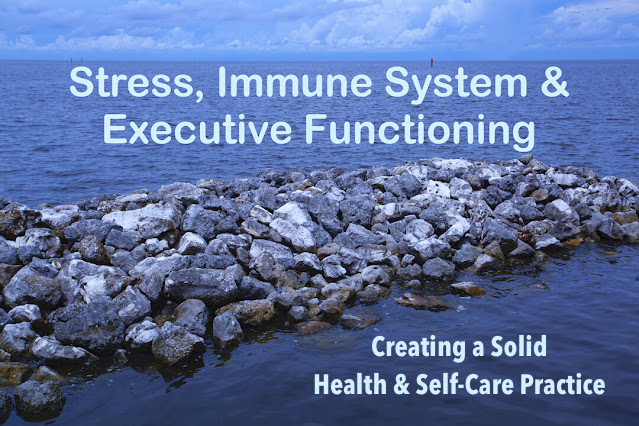CAN'T SLEEP? TRY YOGA NIDRA
TAKE A DEEP BREATH
INHALE PEACE
EXHALE HAPPINESS
- A.D. Posey
 Serotonin: the “feel good” hormone
Serotonin: the “feel good” hormone
GABA: the central nervous system “calming” amino acid
Dopamine: the "reward" hormone
Melatonin: the "sleep" hormone
YOGA NIDRA
Traditionally practiced while lying down, it can also be practiced in a seated position, such as a comfortable recliner. Choose the position most comfortable for you.
If new to Yoga Nidra, perhaps starting with a commitment to a 15-20 minute session, several times per week, may be ideal. In fact, Moszeik, Oertzen and Renner (2020) conducted a study in which they examined an abbreviated form (11 minutes) of Yoga Nidra meditation whose purpose was to evaluate its ability to bring about the relaxation response (without prior meditation experience), within a busy life-style, understanding the time-restriction reality of many people's lives today. They were interested in knowing whether a short session of just 11 minutes daily for 30 days would derive beneficial results. Follow-up findings (six weeks later) supported its efficacy as participants reported lowered stress, improved sleep, and higher levels of well-being by integrating a short dose of Yoga Nidra into their schedule.
Whether you are participating on-line (or through an app) or attending a Yoga Nidra class at your local studio, you will be asked to get into a resting position for the duration of the session and the instructor will verbally lead you through guided meditation instructions. Class sessions are typically 30-45 minutes. Bolsters and blankets can also be used if these will help you feel more comfortable.
Where intention goes,
energy flows.
You will then be guided to focus your awareness on breath, sensations within the body, emotions, feelings, and thoughts; all the while observing these inner processes, but not becoming absorbed by them. This becomes easier with each subsequent practice. As you feel your nervous system calming, you will, in all likelihood, start to experience the benefits of better and deeper sleep.
Yoga Nidra helps to promote deep rest and rejuvenation by slowing down brain patterns allowing your body to deeply relax and enter into a sleep-like state while maintaining awareness.
Whether practiced privately or within a group setting, in-studio or on-line, the benefits are plentiful. Yoga Nidra can be practiced by anyone, regardless of flexibility, fitness level, age, or prior experience with meditation or yoga.
ADDITIONAL BENEFITS OF YOGA NIDRA
1. Reduces symptoms of stress, anxiety, and depression.
2. Improves immune system.
3. Improves executive functioning, especially attention span and focus.
4. Increases energy.
5. Expands creativity.
REFERENCEs
Boston University. "Yoga May Elevate Brain GABA Levels, Suggesting Possible Treatment For Depression." ScienceDaily, 22 May 2007
Moszeik, E.N., von Oertzen, T. & Renner, KH. Effectiveness of a short Yoga Nidra meditation on stress, sleep, and well-being in a large and diverse sample. Curr Psychol41, 5272–5286 (2020). https://doi.org/10.1007/s12144-020-01042-2
Saper CB, Fuller PM. Wake-sleep circuitry: an overview. Curr Opin Neurobiol. 2017 Jun;44:186-192. doi: 10.1016/j.conb.2017.03.021. Epub 2017 May 31. PMID: 28577468; PMCID: PMC5531075.
PROCEED AS IF SUCCESS IS INEVITABLE
The information presented in this blog is intended for general knowledge and is not a substitute for medical advice or treatment. As with most things in life, there isn't a magic pill or "cure-all" but there are strategies to help regain control of your life.
If you enjoyed this article and would like to read more, then let's connect:
FACEBOOK: Marie Therese Rogers
Atlantic Behavioral Health Professionals
Life in Focus
LINKEDIN: Marie T. Rogers, Ph.D.
INSTAGRAM: Mariethereserogers















Nicely explained
ReplyDelete